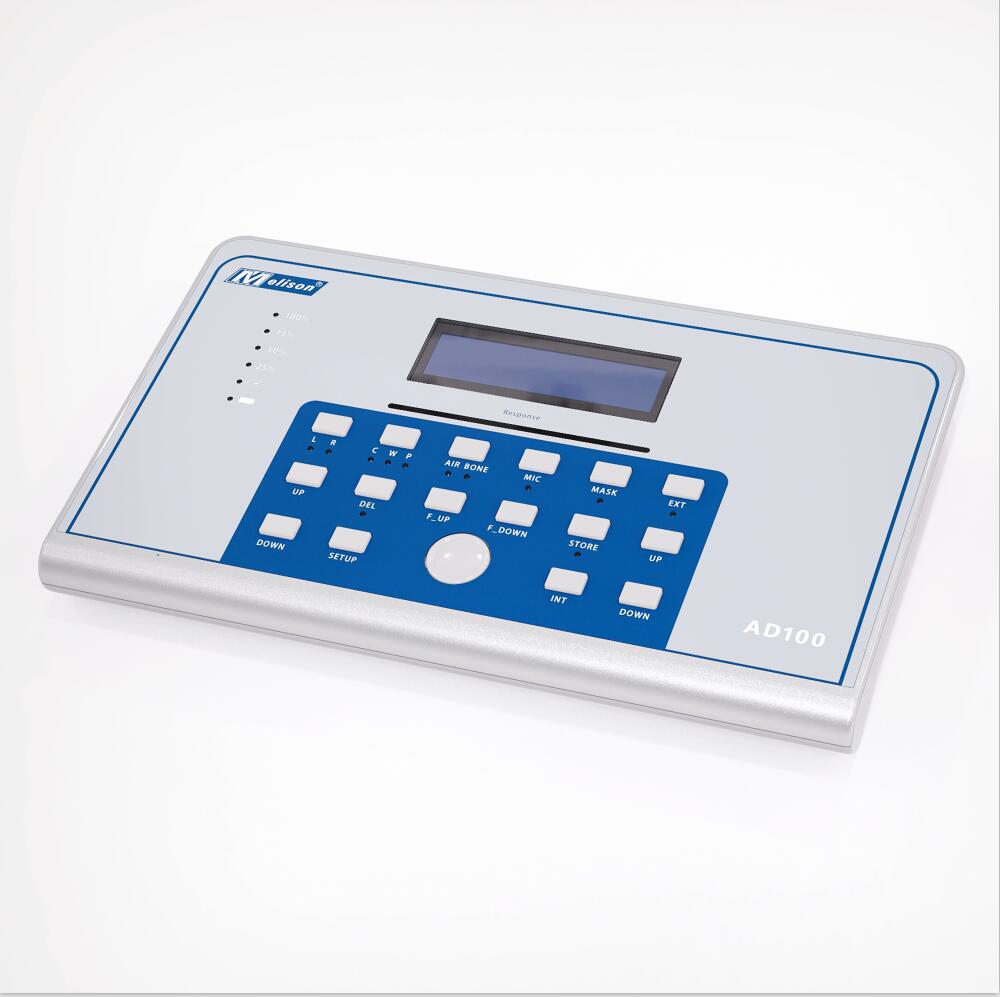Brain stem evoked potential and pure tone hearing test results-2
Description of ‘dB’
The child's hearing test results reach “XX dB” and parents will compare themselves. In fact, in acoustics, the sound intensity represented by "dB" is different, so it is specially proposed and briefly explained:
As we all know, decibel is a unit used to indicate the intensity of sound. Physically, it is divided by the sound pressure P of the measuring point by the reference sound pressure Pr and then calculated by logarithm (dB SPL). The meaning of “SPL” is the Sound Pressure Level, which is also the reference value used by the national metrology department to calibrate various hearing instruments. When using conventional audio-visual headphones, the pure-tone audiometer must output 7.5dBSPL, so that the pure-tone signal of 1000Hz can reach 0dB HL (IEC318 standard). Because of the length relationship, the reference values of other frequencies are not listed here.

Melison portable audiometer AD100
2. Usually, if the other parameters are not marked after the “dB” in the test report, it is generally the result of pure tone stimulation, because there is only a pure tone (pure tone) for the national standard hearing detection. ), it has frequency characteristics, such as pure sound of 1000Hz is a sine wave that oscillates 1000 times per second. The commonly used frequencies are 125, 250, 500, 1000, 2000, 3000, 4000, 6000, 8000Hz, etc. Pure tone is widely used in pure tone. (Electrical) hearing detection, acoustic impedance, otoacoustic emission, multi-frequency steady state and other hearing detection instruments, pure sound intensity is expressed by "dB HL", "HL" means hearing level (Hearing Level), can be omitted Write, directly expressed as "XXdB"; children wearing hearing aids often use pure tone audiometry to test the banana map, parents see the "dB" in the test report, it means the child can hear the sound after wearing the hearing aid The minimum amount of stimulation.
To be continued
